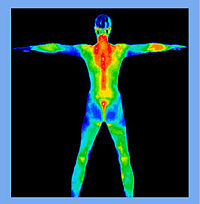Health
The field of medicine involved in the study of radiation exposure is called epidemiology. Radiation has severe implications for health and well-being. In the case of a nuclear disaster it can cause entire ecosystems to be disrupted. Epidemiologists study how radiation is spread out into the environment and the implications for exposed organisms.
Radiation is also used in medicine to treat a wide range of diseases. Radiation is used in medicine in the form of x-rays. Since x-rays have been in use, we have seen vast improvements in the safety of these machines. Radiological health specialists are required to test machines every 1-3 years for leaks or other safety issues. Machines that do not meet standards are decommissioned.
There is a great need for people to work with radiation. A standard allowable limit for radiation was enacted by the International Commission on Radiological Protection to protect those working with radiation, as well as the general public. The limits seek to prevent and limit exposure as much as is realistic.
Legal amounts of exposure to the public are even more restrictive; allowing only 2 percent of what is required for radiation workers. The most restrictive guidelines relate to pregnant women, who can only receive 10 percent of what others can receive. This is because the health effects to the fetus from radiation can cause severe damage, which includes birth defects and retardation.
Of course, in reality there is no safe level of exposure. If radiation exposure exceeds the limits set for radiation workers by 10 percent, people can suffer severe health problems. Even low level radiation can increase ones risk of cancer by damaging the DNA within cells. Radiation guidelines stipulate that radiation level should be as low as can be achieved. Companies are required to show that radiation levels are kept as far below the limit as possible, rather than merely meeting the limit.
Radiation is commonly measured as rads or rems in the United States. Current limits require that workers are not exposed to more than 5 rems annually, with .5 rems for pregnant women. Workers are required to wear film badges when working in areas exposed to radiation, which are then read by a dosimeter. The badges measure background levels of radiation. As the level of radiation increases, the film darkens, giving an idea of the level of radiation a person is exposed to.
Using tools to limit workers’ exposure to radiation has reduced fatalities significantly in the past few decades. It is important for companies to continue to work to reduce levels of radiation. The careful following of guidelines ensures a safe and orderly workplace.
http://www.vdh.virginia.gov/Epidemiology/
http://www.vdh.virginia.gov/epidemiology/radiologicalhealth/Xray/index.htm
http://www.ndt-ed.org/EducationResources/CommunityCollege/RadiationSafety/safe_use/exposure.htm
https://www.stanford.edu/dept/EHS/prod/researchlab/radlaser/Hospital_Guidance_document.pdf

